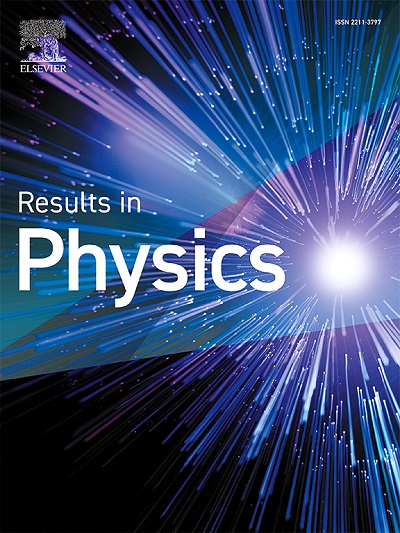Shifted Chebyshev polynomials method for Caputo-Hadamard fractional Ginzburg–Landau equation
IF 4.6
2区 物理与天体物理
Q2 MATERIALS SCIENCE, MULTIDISCIPLINARY
引用次数: 0
Abstract
This paper introduces a fractional version of the Ginzberg–Landau equation utilizing the Caputo-Hadamard derivative. To address this problem, a numerical method based on the shifted Chebyshev polynomials is developed. To employ this approach, a formula for calculating the Hadamard fractional integral of these polynomials is derived. Using this formula, an operational matrix associated with the Hadamard fractional integral of the shifted Chebyshev polynomials is constructed. By expressing the solution of the problem in terms of its real and imaginary parts, the fractional differential equation is transformed into a system of fractional differential equations with real solutions, corresponding to the real and imaginary components of the original problem. Next, the fractional terms in the resulting system are expanded using the expressed polynomials. The presented fractional integral operational matrix is then employed to obtain finite expansions for the solution of the aforementioned system. Utilizing the ordinary second-order derivative operational matrix of the applied shifted polynomials and the collocation method, the fractional system is solved by addressing a system of nonlinear algebraic equations. This approach directly yields the solution to the Ginzberg–Landau equation. The convergence of the established method is rigorously examined both theoretically and numerically, supported by three illustrative numerical examples.
Caputo-Hadamard分数阶Ginzburg-Landau方程的移位切比雪夫多项式法
本文介绍了利用卡普托-阿达玛尔导数的分数型金伯格-朗道方程。为了解决这一问题,提出了一种基于移位切比雪夫多项式的数值方法。为了采用这种方法,导出了计算这些多项式的阿达玛分数积分的公式。利用这个公式,构造了移位切比雪夫多项式的阿达玛分数积分的运算矩阵。通过用实部和虚部表示问题的解,将分数阶微分方程转化为具有实解的分数阶微分方程系统,对应于原问题的实部和虚部。接下来,结果系统中的分数项使用表示的多项式展开。然后利用给出的分数阶积分运算矩阵得到上述系统解的有限展开式。利用移位多项式的普通二阶导数运算矩阵和配置法,通过求解非线性代数方程组求解分数阶系统。这种方法直接得到了金伯格-朗道方程的解。本文从理论上和数值上对所建立的方法的收敛性进行了严格的检验,并给出了三个说明性的数值算例。
本文章由计算机程序翻译,如有差异,请以英文原文为准。
求助全文
约1分钟内获得全文
求助全文
来源期刊

Results in Physics
MATERIALS SCIENCE, MULTIDISCIPLINARYPHYSIC-PHYSICS, MULTIDISCIPLINARY
CiteScore
8.70
自引率
9.40%
发文量
754
审稿时长
50 days
期刊介绍:
Results in Physics is an open access journal offering authors the opportunity to publish in all fundamental and interdisciplinary areas of physics, materials science, and applied physics. Papers of a theoretical, computational, and experimental nature are all welcome. Results in Physics accepts papers that are scientifically sound, technically correct and provide valuable new knowledge to the physics community. Topics such as three-dimensional flow and magnetohydrodynamics are not within the scope of Results in Physics.
Results in Physics welcomes three types of papers:
1. Full research papers
2. Microarticles: very short papers, no longer than two pages. They may consist of a single, but well-described piece of information, such as:
- Data and/or a plot plus a description
- Description of a new method or instrumentation
- Negative results
- Concept or design study
3. Letters to the Editor: Letters discussing a recent article published in Results in Physics are welcome. These are objective, constructive, or educational critiques of papers published in Results in Physics. Accepted letters will be sent to the author of the original paper for a response. Each letter and response is published together. Letters should be received within 8 weeks of the article''s publication. They should not exceed 750 words of text and 10 references.
 求助内容:
求助内容: 应助结果提醒方式:
应助结果提醒方式:


